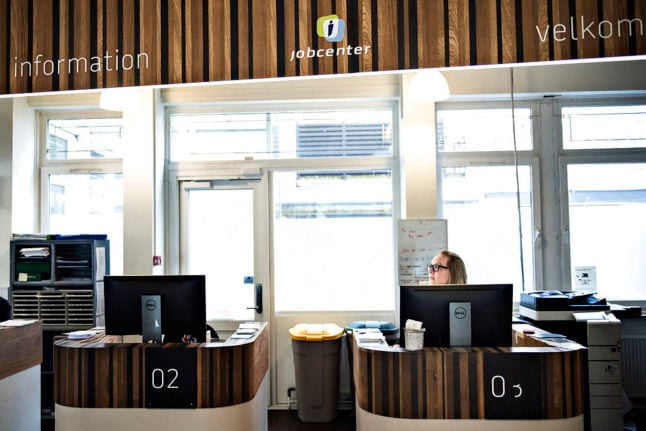The number of people who receive kontanthjælp, the basic form of unemployment welfare, was 103,300 in June, according to Statistics Denmark data.
That is the lowest number since records began 14 years ago.
The number includes other basic benefits given to people on work re-entry programmes as well as the lower integrationsydelse which is given instead of kontanthjælp to migrants who are in the integration system.
People not currently in employment can qualify for welfare payouts known in Danish as dagpenge, funded in part by the state and in part by membership fees, by joining an A-kasse or unemployment union.
Non-A-kasse members can apply for ‘social assistance’ or kontanthjælp, the lowest level of benefit. It is only available to those over 30 years old, who are legally resident in Denmark, and who have no other means of support.
EXPLAINED: Should I sign up with a Danish union and get unemployment insurance?
Economic Council of the Labour Movement (Arbejderbevægelsens Erhvervsråd) senior economist Erik Bjørsted said that the new numbers indicate that the strong Danish economy is bringing people in from the fringes of the labour market.
“We are currently going through a jobs boom without precent in modern times. That is opening the doors for people on the edge of the jobs market,” Bjørsted said.
“The large drop we saw in the number of people receiving social assistance from 2004-2008 was back then called the biggest social-political advance in decades. We are now repeating it,” he added.
An additional factor in the low number is the suspension of the minimum eligibility period for dagpenge during the coronavirus crisis, another commentator said.
That means people would not have been forced to switch from one form of welfare to the other because their dagpenge maximum eligibility period was used up.
As such the current level for the more basic kontanthjælp is “artificially low, according to senior economist Niklas Praefke from organisation Lederne.
“During the coronavirus crisis, the dagpenge limit was suspended, so nobody used up their right to it during that period. That has put a plug in the transition from dagpenge to kontanthjælp,” Praefke said in a written comment.
The economist also said that a high number of vacancies in Denmark gave good potential for getting available people into work.
READ ALSO: Why does Denmark have so many job vacancies?
The number of people receiving kontanthjælp peaked at 175,200 in 2015 before consistently falling, except for a sharp peak caused by the coronavirus crisis.
Denmark’s government on earlier this week presented proposals to reform rules on certain types of social welfare including the two main forms of unemployment benefit.
READ ALSO: What do Denmark’s proposed welfare reforms mean for foreign residents?



 Please whitelist us to continue reading.
Please whitelist us to continue reading.
Member comments